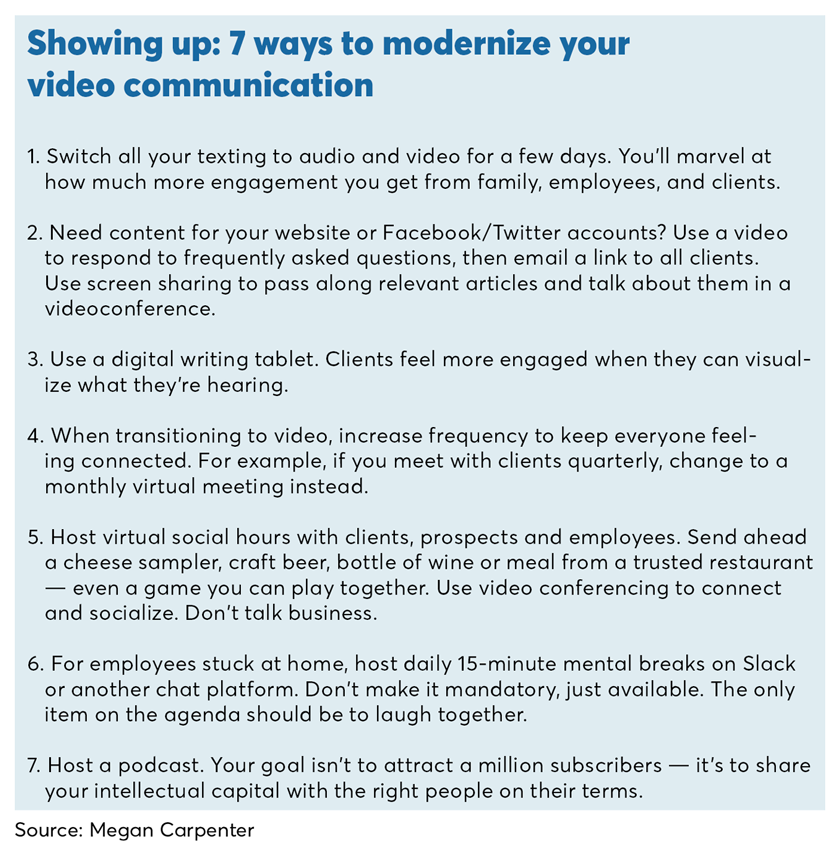Here we all are, sitting at home, trying to keep the kids out of the frame for the Skype call, just waiting to go back to business as usual. By now, most of us have realized business may never be quite the same again—and we better get used to it, fast.

Social distancing is hitting the financial services industry particularly hard, especially for its armies of extroverted executives, salespeople, relationship managers, people managers, and advisors. Wealth management is famously a relationship business, conducted face-to-face, powered by handshakes, backslaps and pats on the arm when clients go through tough times.
Years ago, a few visionary firms realized that a one-on-one, in-person model isn’t sustainable in an era of billion-dollar advisory firms. They looked for a way to scale up, to “be there” for multiple clients without actually being in the same room. They found their answer in virtual communications like digital, audio, and especially video media. Most financial businesses, though, looked at video with a wary eye. They stuck with face-to-face engagement, which always worked before, even if it did limit their growth.
Enter COVID-19. Suddenly, classrooms moved online. Telemedicine replaced doctors’ office visits. FaceTime calls became the only way some seniors could see their grandkids. Overnight, social distancing dragged video to center stage in human relationships. Now, video is a valued, trusted, normal part of day-to-day interactions.
You might dismiss all this video engagement as a temporary workaround. But cataclysmic upheavals like this don’t simply give rise to workarounds. They reshape entire landscape — permanently. The day scientists find a cure, most of us will head back to the office. But video isn’t going to surrender its newfound role as a critical communications channel. Business will have to make virtual engagement central to their strategy. The firms that get a head start with video now are the ones who will thrive tomorrow.
Wondering where to begin? Fortunately, it’s the perfect time to DIY. Clients aren’t interested in high production values at the moment. They’re lonely and hungry for information — just be authentic.
Here are a few tips to get you started:

For your first efforts, start playing with devices you already own. If you really want to up your game, don’t spend more than $250 on new equipment. Once the crisis ends and the world is no longer working in pajamas, your virtual communications will need to evolve. The financial industry offers a very expensive service, after all, and your communications need to reflect your brand.
Video seems hard until it’s easy. Changing the type and cadence of your communications feels very uncomfortable, until one day it feels normal. Training, coaching, tools, and ongoing support can help.
These days, all of us feel a little alone. But so much human kindness, amazing innovation, and new standards will eventually be born from this horrific global pandemic. For the financial industry, virtual communication is going to be one of those silver linings. Our isolation will come to an end, and we’ll find more ways to connect than ever before.
Leave a Reply